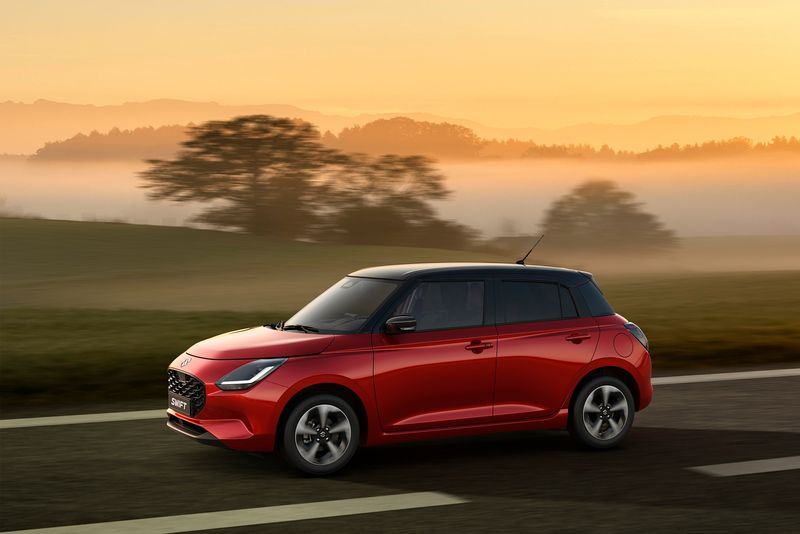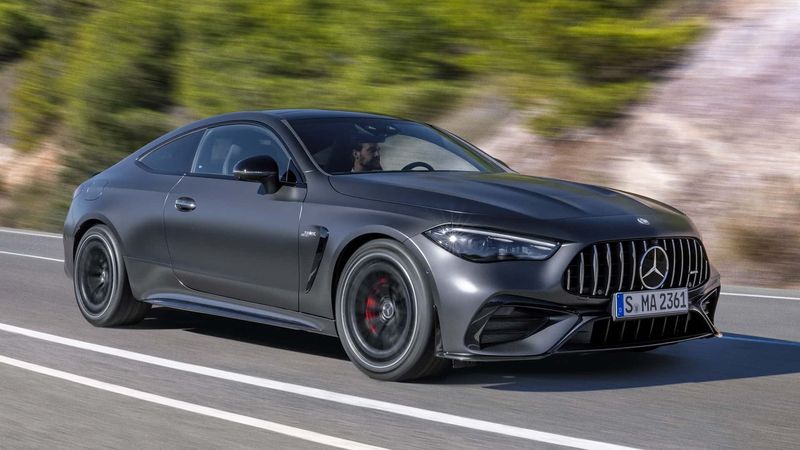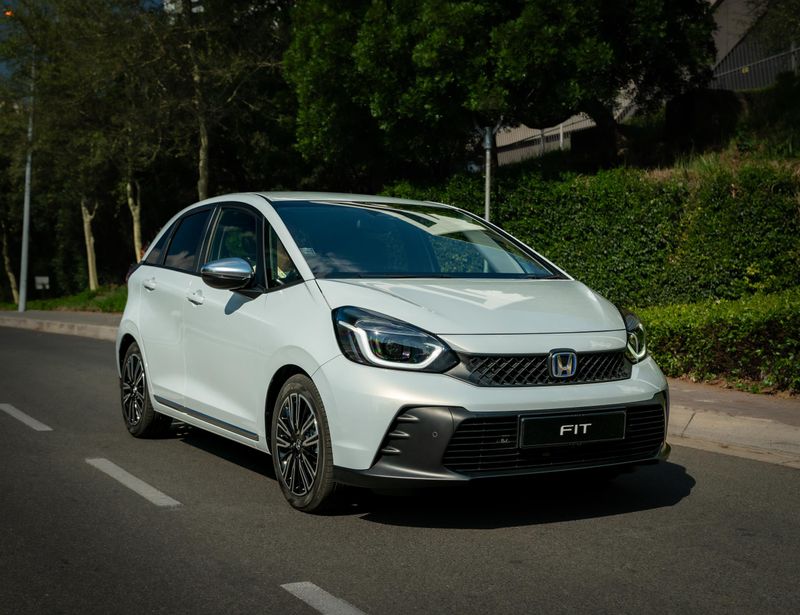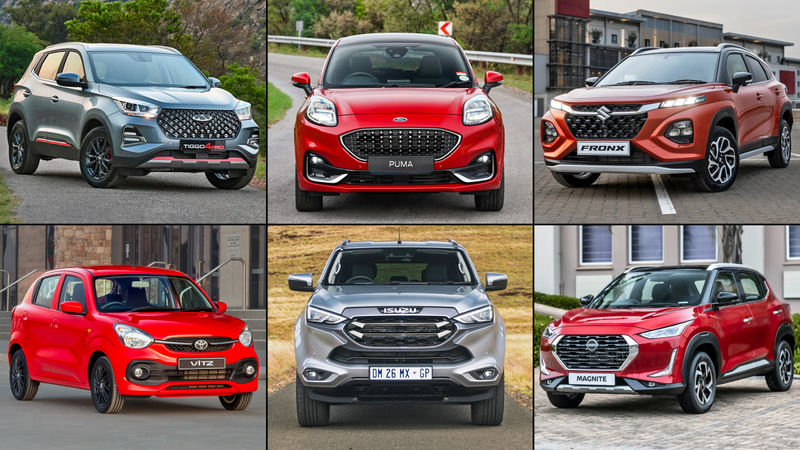





















The front passenger seat is not the place I’d usually choose to sit when it comes to the Volkswagen Golf GTI – a car whose very existence is based on the visceral thrill delivered by its driving experience. But as this is the latest, 8th-generation model not due in local showrooms until later this year (or early 2021, if delayed) and we’ve got one of the world’s best test facilities all to ourselves for the next hour or so, it is time to make an exception.
After filling out a variety of forms to gain the security clearance to venture beyond the heavily-guarded perimeter of Volkswagen’s vast Ehra-Lessien development centre in Germany, I find myself seated next to VW’s head of driving dynamics, Karsten Schebsdat, as he gunsthe new Golf GTI flat out in 7th gear along a seemingly never-ending straight. The course is ultra-smooth, 4-lanes wide (in parts) and a mesmerising 8.6 km in length.

VW's test facility allows for high-speed and handling tests within a heavily guarded compound.
With the digital speedo indicating 250 kph, Schebsdat is busy explaining the fundamental differences in driving character between the new Golf GTI and its immediate predecessor, launched back in 2013. “It’s very settled at speed. We’ve transferred more load stiffness to the rear, which improves balance and helps the carto track better,” he says while drawing a finger across the central display to alter the driving mode more in the direction of Sport.
Then, without warning – or the faintest hint of a lift, the Volkswagen engineer whips on a quarter turn or so of steering lock. “It’s also extremely responsive and more stable than before,” he adds, as we veer sharply across the neighbouring lanes before he corrects the steering again. The lateral forces involved are truly colossal. But in the second or two they take to bury their way into the pit of my stomach, the prototype we’re in has already regained its composure and we head straight on again as if nothing untoward had happened.
As the latest derivative of theGolf 8, there’s not much about the latest GTI that isn’t instantly familiar. And yet, it feels different; more eager and sporting in its actions, but with the same degree of refinement and polish as its lesser siblings. In time-honoured fashion, it retains the front-wheel-drive layout of its celebrated predecessors, which means it continues to compete with very creditable rivals, including the Honda Civic Type R and Renault Me?gane RS.

The same engine as the previous GTI does duty again, albeit with a bit more oomph.
Up front, the 2020 iteration ispowered by the same 2.0-litre 4-cylinder turbopetrol engine as its predecessor – the EA888, to use its internal codename. Earlier signs suggested it was set to lift its reserves with 48V mild-hybrid electric boosting, but Volkswagen has decided to continue down the same conventional path as before without the additional power enhancement from the alternator seen in lesser versions of the new Golf.
The result? The standard Golf GTI now develops the same 180 kW from 4 700 to6 200 rpm and 370 Nm between 1 600 rpm and 4 300 rpm as the Mk7 GTI’s Performance derivative, giving it an 11 kW and 20 Nm lift in reserves on the 7th-generation model it replaces.
It’s all channelled through a standard 6-speed manual gearbox or, as is the case with the prototype we’re in,a7-speed dual-clutch transmission with shift paddles mounted on the steering wheel – which is the version that will be offered in the South African market(the GTI will spearheadthe arrival of the Golf 8 range). As with the previous incarnation of the Golf GTI, there’s also an electronically controlled limited-slip differential, or XDS… as Volkswagen likes to call it. It detects unloading of the inside wheel and uses individual braking application via the electronic stability control system to restore traction.
Volkswagen isn’t giving away much at all on performance just yet but Schebsdat, who has worked on developing such highly lauded cars such as the original Ford Focus and the 911 GT3 RS 4.0 (during a stint at Porsche Motorsport), suggests the standard Golf GTI is close to the old Golf GTI Performance for outright accelerative ability, with a 0-100 kph time of around 6.2 sec.

The GTI range is expected to consist of a standard GTI and a Clubsport model.
Following the strategy established with the 7th-generation model, Volkswagen plans a 2-tiered line-up for the latest Golf GTI.Gone is the Performance version, which in effect will be supplanted by this new, more potent standard GTI, while the Clubsport, whose moniker was previously reserved for special track-based limited-production models, will replace the Golf GTI TCR. Details have yet to be officially revealed, although the Clubsport is claimed to run the same level of tune to the EA888 engine as the outgoing GTI TCR, which develops 213 kW at 5 400 rpm and 370 Nm of torque between 1 950 rpm and 5 300 rpm.
Today isn’t about drivelines, though. It’s about exploring dynamic qualities. And Volkswagen’s Ehra-Lessien facility is just the place to show us what the new Golf GTI can do. It has everything: endless straights, where you can run flat out for minutes on end; banked corners, where the centrifugal forces allow the driver to go hands-off above certain speeds; handling roads, featuring every kind of corner, camber and surface you could ever wish for and much more. It is torture for any car, but it also providesvaluable insight into on-the-limit behaviour without having to venture out onto public roads.
So just how do you instil the dynamic qualities that have distinguished the Golf GTI since its introduction to the Volkswagen line-up in 1974 into the new model, while also ensuring it meets its brief of appealing to a wider customer audience than ever before? “There is a lot of detailed tuning work,” says Schebsdat. “Every component has come under the spotlight. It is a process that was integrated into the development of the new Golf from the very beginning.”

A slight modification to the front of the MQB platform makes it slightly lighter and stiffer than before.
Once again, the starting point was Volkswagen’s versatile MQB platform – a structure renowned for delivering some of the highest levels of stiffness in the class. To this, the new Golf GTI adds an aluminium front subframe in place of the steel unit used previously. Similar to that developed for the earlier limited-production Golf GTI Clubsport S, it saves 3 kg andprovides a more rigid basis for the electromechanical steering and MacPherson strut front suspension than before.
Predictably, the steering continues with a variable ratio rack as standard, although it is more direct, with an on-centre ratio of 14.1:1 resulting in 2turns lock to lock. A new software package has also been developed to improve steering response and deliver more urgent self-centring.
Another key development brought to the latest Golf GTI is Volkswagen’s new VDM (vehicle dynamics manager) system. It provides a centralised network for a series of different functions, including the steering, throttle, gearbox and adaptive dampers – the last of which continue to be made available as an option as part of an upgraded DCC (dynamic chassis control) system that’s claimed to provide faster damper adjustment at each wheel for improved body control, added ride refinement and, as displayed during our high-speed runs, a generally more settled feel to the car as a whole.
Volkswagen says the VDM system also enhances the operation of the XDS electronic diff lock by providing it with additional information on other systems, including the DCC. “It is now more effective than ever, especially during hard cornering,” says Schebsdat. “The apportioning of drive to each of the front wheels is now more finely controlled and dependent on a greater number of different factors than it was previously.”

The Drive Mode selection will have a slider that allows for fine-tuning of the driving experience.
As before, there are 4driving modes: Comfort, Eco, Sport and Individual. However, they can be set more precisely via a digital slider with extra steps now incorporated between each mode for a broader range of driving characteristics.
The suspension, which adopts the same rear multi-link set-up as the old model, is set 15 mm lower than in other versions of the new Golf and is imbued with its own unique kinematic properties. The standard wheels are 17-inch, although buyers will be able to choose 18-inch and 19-inch options. The prototype we’re in rides on 18-inch wheels shod with 225/40-profile Bridgestone Potenza S005 tyres.
What Volkswagen has set out to achieve with the new Golf GTI is greater cohesiveness, as well as linearity and incisiveness in the way its mechanical components work in combination with its various electronic systems. The aim is to build on the solid basis of the old model with a heightened feeling of precision, composure and stability through superior networking of each individual function.
“We didn’t want a nervous-feeling car tuned for ultimate performance, but one that instils confidence in the driver in every possible situation,” says Schebsdat.

Don't expect lift-off oversteer from the GTI, this model is all about stability and responsiveness.
Over Ehra-Lessien’s more demanding handling roads, you sense the consistency in the Golf 8's responses, the inherent balance of its chassis and its heightened agility. It all starts with the apparent decisiveness with which the new Golf GTI turns in to corners in Sport mode and then continues with the way its electronic differential deftly goes about the business of apportioning drive to the front wheels. There is outstanding grip from the tyres, which do a great job of resisting any urge of the Volkswagen's front end to run wide prematurely even on bumpy surfaces; it allowsthe driver to maintain lots of momentum to the apex without the car feeling on edge.
On a particularly demanding section with lots of high-frequency bumps, we enter a tight constant-radius corner. Schebsdat keeps the throttle nailed and delicately places the caron the inside white line while maintaining constant steering angle. All the while, I keep expecting the liberalgripthat was evident on entry to weaken. However, the Golf keeps trackingtrue. There is no scrub or even a hint of understeer, despite a heady combination of lateral and vertical forces loaded through the suspension.
At the next corner, a long, opening left-hander, Schebsdat carries even greater speed before suddenly lifting the throttle and then mashing it against its backstop again. It’s remarkable just how stable the GTI's rear-end remains. Even with provocation, the prototype continues to track with great determination.
Body control is another real strength at the sporting end of the new Volkswagen’s various driving modes. There is a degree of lean in slower corners, but the improved action of the adaptive dampers ensures it builds in a more progressive way than before, especially from the initial point of unsettling. Indeed, overall composure is one of the key attributes of the Golf GTI’s handling, and that can also be said of its ride. There is a predictable firmness to the underpinnings but there’s no real abruptness, even on the optional tyres. Vertical movement is exceptionally well controlled, giving it impressive settled properties in Comfort mode. Its ability to dampen after-shake over large bumps is also commendable.
On that note, my time in the passenger seat of the new Golf GTI is over. The 8th-generation of Volkswagen's iconic hot hatch may not be the most powerful or fastest car in its class, but it represents a major leap forward compared with its much-loved predecessor. It feels wonderfully agile and responsive in the best of GTI traditions, but also assuredly stable and composed when pushed to its limits. It’s going to be a few more months until we get to jump behind the newcomer's steering wheel ourselves, but we already know that it's an accomplishedhot hatch. Suffice to say we can hardlywait for it to arrive on local shores…
Mk2 Volkswagen Golf GTI Goes Wide
Volkswagen Golf 8 GTI officially revealed
Volkswagen Golf 8 GTI Filmed in Cape Town





